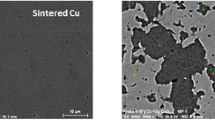Abstract
The method of standard additions with electrochemically generated spikes was elaborated and demonstrated on examples of O2 and H2 chromatographic analysis in standard mixtures. While oxygen portions may be generated directly in a stream of inert gas by solid-state electrolysis, a standard hydrogen-containing mixture is introduced into the electrochemical cell followed by controlled electrochemical consumption of hydrogen. In both cases the analysis characteristics are similar: the recovery is 90–120% and exhibits a slight sensitivity towards the flow rate of the analyzed oxygen-containing gas. The relative error associated with the non-ideal proportionality between the spike and chromatograph signal is within 10–15% for operation in the optimum concentration region. The major factors affecting the accuracy of the analysis are associated with detector characteristics, particularly influenced by the sample dilution, precision of flow controllers and linearity of the function “signal vs. spike.” The lowest errors of determination were found to be for the analyte content range 1–5% while at oxygen and hydrogen concentrations below 0.5% the interference of the signal associated with other components may lead to overestimated results.

Scheme of the gas line used for oxygen determination with electrochemically generated standard additions (method 2). Inset shows an example of oxygen content calculation using the dependency “chromatographic signal vs. current.”





Similar content being viewed by others
References
Laan GPVD, Beenackers AACM. Kinetics and selectivity of the Fischer–Tropsch synthesis: a literature review. Catal Rev-Sci Eng. 1999;41(3–4):255–318. https://doi.org/10.1081/CR-100101170.
Zhan Z, Barnett SA. An octane-fueled solid oxide fuel cell. Science. 2005;308(5723):844–7. https://doi.org/10.1126/science.1109213.
Lucchini MA, Testino A, Kambolis A, Proff C, Ludwig C. Sintering and coking resistant core–shell microporous silica–nickel nanoparticles for CO methanation: towards advanced catalysts production. Appl Catal B. 2016;182:94–101. https://doi.org/10.1016/j.apcatb.2015.09.012.
Kolotygin VA, Ivanov AI, Matveev DV, Bredikhin SI, Kharton VV. Electrochemical behaviour of (Fe,Ni)Ox-based anodes for solid oxide fuel cells in methane-containing atmospheres. Russ J Electrochem. 2020;56(2):accepted for publication.
Ideris A, Croiset E, Pritzker M, Amin A. Direct-methane solid oxide fuel cell (SOFC) with Ni-SDC anode-supported cell. Int J Hydrog Energy. 2017;42:23118–29. https://doi.org/10.1016/j.ijhydene.2017.07.117.
Kolotygin VA, Ivanov AI, Noskova VA, Kostretsova NB. Electrochemical preparation of standard gas mixtures using solid-state electrolyte membrane. J Chromatogr A. 2019;1590:121–9. https://doi.org/10.1016/j.chroma.2019.01.017.
Platonov IA, Rodinkov OV, Gorbacheva AR, Moskvin LN, Kolesnichenko IN. Methods and devices for the preparation of standard gas mixtures. J Anal Chem. 2018;73(2):109–27. https://doi.org/10.1134/S1061934818020090.
Naganowska-Nowak A, Konieczka P, Przyjazny A, Namieśnik Ja. Development of techniques of generation of gaseous standard mixtures. Crit Rev Anal Chem 2005;35:31–55. https://doi.org/10.1080/10408340590947916.
Brewer PJ, Brown RJC, Miller MN, Miñarro MD, Murugan A, Milton MJT, et al. Preparation and validation of fully synthetic standard gas mixtures with atmospheric isotopic composition for global CO2 and CH4 monitoring. Anal Chem. 2014;86:1887–93. https://doi.org/10.1021/ac403982m.
McIntosh S, Gorte RJ. Direct hydrocarbon solid oxide fuel cells. Chem Rev. 2004;104:4845–65. https://doi.org/10.1021/cr020725g.
Gong M, Bierschenk D, Haag J, Poeppelmeier KR, Barnett SA, Xu C, et al. Degradation of LaSr2Fe2CrO9-δ solid oxide fuel cell anodes in phosphine-containing fuels. J Power Sources. 2010;195:4013–21. https://doi.org/10.1016/j.jpowsour.2009.12.117.
Vincent AL, Luo J-L, Chuang KT, Sanger AR. Promotion of activation of CH4 by H2S in oxidation of sour gas over sulfur tolerant SOFC anode catalysts. Appl Catal B. 2011;106:114–22. https://doi.org/10.1016/j.apcatb.2011.05.014.
Thi HHM, Rosman N, Sergent N, Pagnier T. Impedance and Raman spectroscopy study of effect of H2S on Ni-YSZ SOFC anodes. Fuel Cells. 2017;17(3):367–77. https://doi.org/10.1002/fuce.201600182.
Frenich AG, Vidal JLM, Moreno JLF, Romero-González R. Compensation for matrix effects in gas chromatography–tandem mass spectrometry using a single point standard addition. J Chromatogr A. 2009;1216:4798–08. https://doi.org/10.1016/j.chroma.2009.04.018.
Paíga P, Mendes L, Albergaria JT, Delerue-Matos CM. Determination of total petroleum hydrocarbons in soil from different locations using infrared spectrophotometry and gas chromatography. Chem Pap. 2012;66(8):711–21. https://doi.org/10.2478/s11696-012-0193-8.
Ellison SLR, Thompson M. Standard additions: myth and reality. Analyst. 2008;133:992–7. https://doi.org/10.1039/B717660K.
Burns DT, Walker MJ. Origins of the method of standard additions and of the use of an internal standard in quantitative instrumental chemical analyses. Anal Bioanal Chem. 2019;411:2749–53. https://doi.org/10.1007/s00216-019-01754-w.
Perfilyev MV. Electrode reactions in solid electrolytes. Solid State Ion. 1983, 9–10(2):765–76. https://doi.org/10.1016/0167-2738(83)90085-1.
Fairfield DP, Davis NAL. Soap film flowmeter. US Patent 4879907. 1989;Nov. 14.
Conti ME, Muse JO, Mecozzi M. Uncertainty in environmental analysis: theory and laboratory studies. Int J Risk Assessment and Management. 2005;5(2–4):311–35. https://doi.org/10.1504/IJRAM.2005.007174.
Konieczka P, Namieśnik J. Estimating uncertainty in analytical procedures based on chromatographic techniques. J Chromatogr A. 2010;1217:882–91. https://doi.org/10.1016/j.chroma.2009.03.078.
Abdollahi H. Simultaneous spectrophotometric determination of chromium(VI) and iron(III) with chromogenic mixed reagents by H-point standard addition method and partial least squares regression. Anal Chim Acta. 2001;442:327–36. https://doi.org/10.1016/S0003-2670(01)01174-6.
Wieczorek M, Rengevicova S, Świt P, Woźniakiewicz A, Kozak J, Kościelniak P. New approach to H-point standard addition method for detection and elimination of unspecific interferences in samples with unknown matrix. Talanta. 2017;170:165–72. https://doi.org/10.1016/j.talanta.2017.03.101.
Funding
The work was carried out under financial support of the Russian Science Foundation (grants 17-79-30071 and 19-72-10113). ZrO2-based electrolyte materials used for fabrication of the solid-state electrolyzer were prepared within the grant 19-72-10113. Construction of the experimental setup and chromatographic studies were carried out within the grant 17-79-30071.
Author information
Authors and Affiliations
Corresponding author
Ethics declarations
This article does not contain any studies involving animals or human participants performed by any of the authors.
Conflict of interest
The authors declare that they have no conflict of interest.
Additional information
Published in the topical collection Euroanalysis XX with guest editor Sibel A. Ozkan.
Publisher’s note
Springer Nature remains neutral with regard to jurisdictional claims in published maps and institutional affiliations.
Rights and permissions
About this article
Cite this article
Ivanov, A.I., Kolotygin, V.A. & Kostretsova, N.B. Electrochemically generated standard additions for gas chromatography: case study of O2 and H2 analysis. Anal Bioanal Chem 412, 5043–5052 (2020). https://doi.org/10.1007/s00216-020-02395-0
Received:
Revised:
Accepted:
Published:
Issue Date:
DOI: https://doi.org/10.1007/s00216-020-02395-0




